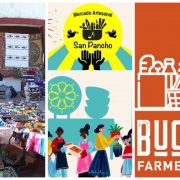The Mangroves Add Environmental And Touristic Value To The Riviera Nayarit
- The Riviera Nayarit is one of the few places in the world where you can find all four groups of mangroves in existence: White, Red, Black and Buttonwood. Approximately 500 people tour the Tovara area during the high season.
There are several ecosystems in the Riviera Nayarit that stand out for the beauty of their flora and fauna, making them magnets for thousands of tourists to the area. There are also species that lend a particular richness to the area. One example is the mangrove and its vital role in the Destination.
There are 34 species of mangroves divided in four distinct groups: White, Red, Black and Buttonwood. The Riviera Nayarit is one of the few places on the planet where you can find all four—they can be seen in the Tovara in San Blas, or “Tobara” in the Náhuatl language, meaning “water born of the rocks.”
The Tovara area is a birdwatcher’s paradise in large part thanks to the mangroves, as they form an excellent nesting ground for hundreds of birds thanks to their relative safety, not to mention the ideal climate and the amount of food available.
It’s also a big draw for tourism in general, making it one of the biggest attractions in San Blas. Even in low season there are approximately 50 people per day enjoying the tour, a number that increases up to 500 per day in high season, according to the local boatmen.
The mangrove is the basis of an enormous food chain that includes everything from mollusks and fish to humans themselves. Among its most outstanding properties is the richness of the protein deposited by its leaves as they fall to the ground—they are composed of 13% protein, in fact, compared to the usual 0.3%.
In areas such as the Isla de Mexcaltitán, where there are abundant mangroves, the locals use the leaves (not the wood) to give the famous pescado zarandeado fish dish its unique flavor. The mangrove wood is currently a protected resource per the NOM 059 SEMARNAT-2010 regulation. Another area rich in mangroves is the Marismas Nacionales, the marshes located in the northern reaches of the state.
During natural disasters such as hurricanes, the water absorption provided by the mangroves greatly reduces its impact. Such was the case with Hurricane Kena in 2002, which instead of lasting the estimated eight hours raged on for less than five. There are so many reasons to preserve this species. Be informed, help conserve it and enjoy it!



Leave a Reply
Want to join the discussion?Feel free to contribute!